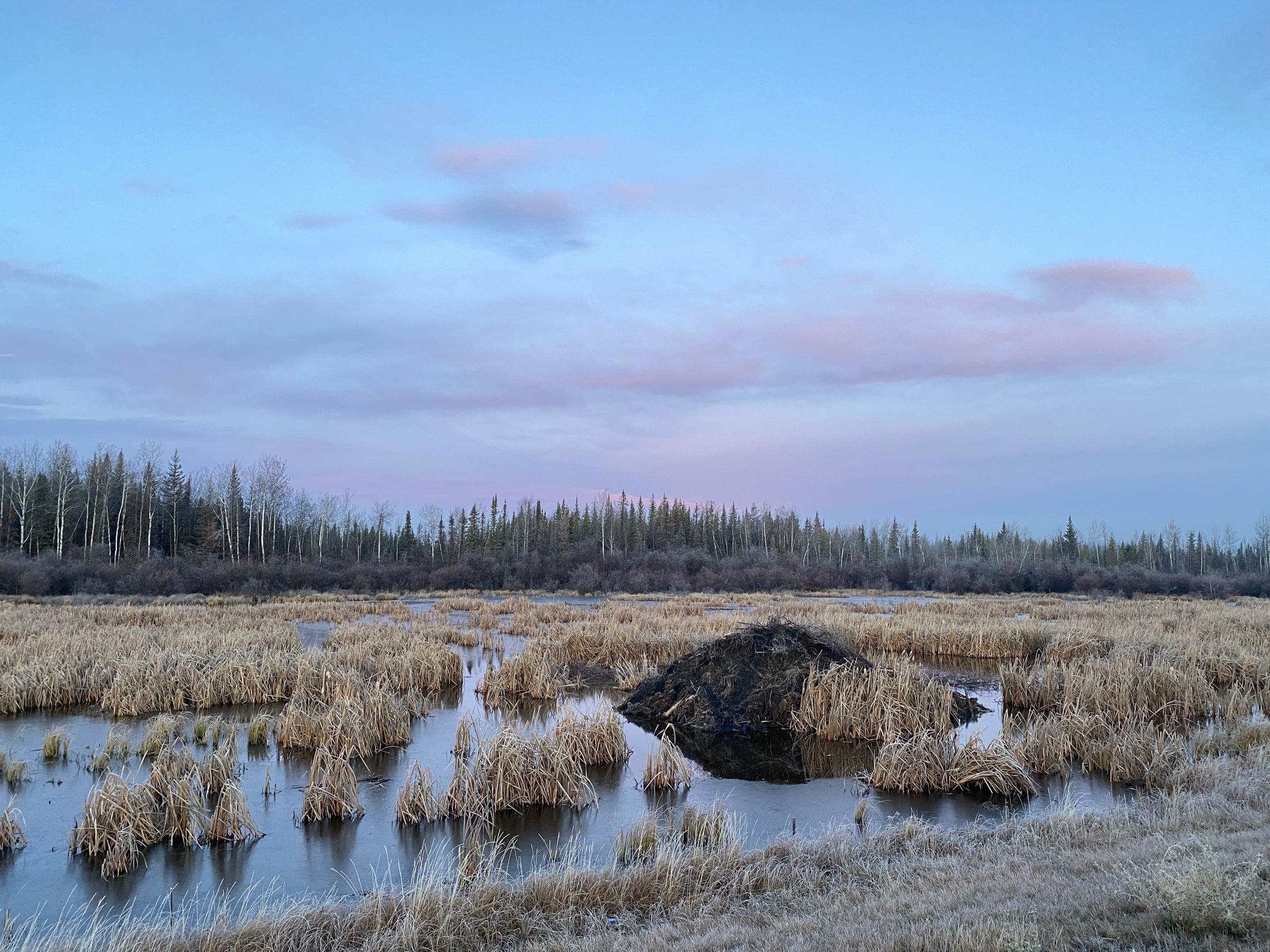Sustainability is
Our Responsibility
Our Responsibility
Sustainability is inherent to who we are. From how we source our furs, to our handmade process, and the ways our workshop is run. We live in respectful relationship with the natural world, offering fur for warmth.
Guided by Indigenous principles, we live by actions that nurture sustainability seven generations forward. We respectfully consider past, present, and future generations.
In the circle of life, we are all interdependent. Indigenous Natural Law respects and honours all relationships. These are the essential values guiding our business and all of our decisions.
Humans have the ability to create conditions for all life to thrive. We need to think beyond maintaining the status quo and take positive action for regeneration to occur.

Sacred Relationships
Tsa (beaver) is a world builder, the one that brings forth the water and more life. Tsa continuously works with water, land, plant, and animal nations to create shared worlds.
Tsa offers lessons by living in connection with the world around us — through knowledge, wisdom and industriousness.
From the beginning of time, we have relied on fur to survive. Reawakening our need for natural materials like fur is essential for our collective survival. Fur harvesting gives value to traditional Indigenous and local economies.
Beavers reproduce in large litters and overpopulation is common. When this occurs, numbers plummet. Fur harvesters play an active role in maintaining balance in populations while cultivating abundance for beavers.
Beaver meat is one of the most nourishing foods to eat, feeding both animals and humans. Returning their meat to the Land provides sustenance for birds and other animals to thrive. We utilize the whole pelt in deep respect to the beaver.
We offer flexible work for Indigenous women to balance life sustainably. Our handmade process is a relationship centered operation from an efficient workshop.
Beaver fur is renewable, with an extraordinarily long lifespan. Our low-impact, handmade production process and biodegradable materials make for a circular supply chain.
We choose to ship directly from our workshop in Northern Canada. Your order arrives in simple and minimal packaging made of recyclable cardboard, paper inserts and envelopes.
Q: Where do beavers live?
Beavers live throughout Canada, primarily in the Boreal forest. Stretching from Alaska to Labrador, the Boreal forest is one of the largest intact wilderness areas left on the planet. Much of the northern boreal is spared from development and wild beavers thrive in habitats of waterways, rivers, lakes, and streams.
Q: How are beavers harvested?
Harvesting beavers is hard work and a well-respected skill in northern Canadian communities. Beavers are harvested during winter from October to April when their coats are at the height of thickness. The trapping seasons are monitored and regulated by government. The fur harvester uses certified humane traps on the Land, in waterways and under the ice. Beavers are quickly and carefully prepared to ensure a premium quality pelt.
Q: After the pelt is harvested, what happens to the rest of the beaver?
Reciprocity is a pillar of our Indigenous World view. According to the natural model of reciprocity, the gift of life necessitates both respect for that gift and a return. Indigenous peoples see an expression of this in the respectful return of parts of the animal to its habitat.
The beaver meat is most often brought back to the trapline and eaten by the other animals in the forest. When one returns the next day, nothing remains. My father used to say that beaver meat is like a vitamin pill for animals surviving in harsh environments.
The beaver castor is collected by the harvester and sold at fur auctions for use in perfumes and as food flavour enhancers. The oil glands are used in trapping lure.
Beaver meat is consumed by humans for its nourishment. It has a similar taste to wild boar with rich, dark meat. When we were young, my mother prepared canned beaver meat for meals during the summer months. Additionally, beaver tails are roasted over open fires as a delicacy in many Indigenous cultures. It has a light flavour and fatty texture; tasty with just salt and pepper!
The meat is also sold to local dog mushers to feed their dogs. Many mushers favour beaver meat for its excellent nutritional value. This practice is more environmentally friendly than purchasing commercially mass-produced dog food.
Q: Are beavers farmed and are they considered an at-risk species?
Beavers are resilient, wild animals that cannot be farmed or domesticated. They produce litters every spring, which contributes to their abundance.
Beginning in the 1700's, the early fur trade in Canada saw the near extinction caused by over trapping of the Canadian beaver for the production of Europe's fashion-crazed felted beaver top hats. In the early 1900's, people woke up to what was happening and curbed the widespread devastation. The populations recovered quickly.
Today, conservation is paramount for fur bearers and their numbers are closely monitored. Beavers are thriving and are not an endangered or threatened species.
Q: What happens to beavers in urban and commercialized areas?
Human development, exploration and expansion results in habitat destruction. Beavers and humans collide in urban and commercialized areas where, sadly, beavers are often eliminated as pests.
Q: What are the threats to healthy beaver populations?
While beavers are resilient and have expansive habitats to thrive in North America. The climate crisis, environmental destruction, and pollutants threaten species on every corner of the earth.
It is our collective responsibility to protect the environment so all animals, including beavers, continue to thrive.



